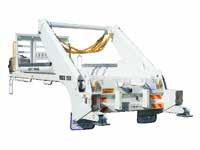
14 minute read
COLLABORATIVE VISION FOR MELBOURNE
Collaborative vision for Melbourne’s waste
WASTE MANAGEMENT REVIEW CATCHES UP WITH OUTGOING METROPOLITAN WASTE AND RESOURCE RECOVERY CEO ROB MILLARD ON HIS MORE THAN 30- YEAR CAREER IN BUILDING VICTORIA’S RECYCLING NETWORK.
Whether you’re a “garbo”, a councillor or an engineer, the waste sector has for many been a career for life.
The industry’s evolution from collection and sorting to landfill diversion has meant the opportunities for career development over the past few decades have been immense.
Yet none of this would have happened if the industry had remained risk averse and it is the ability to continually learn from its mistakes that inspires outgoing Metropolitan Waste and Resource Recovery (MWRRG) CEO Rob Millard.
Earlier this year, Rob announced his retirement, with Jillian Riseley appointed as the new CEO.
After several months of volatility with the financial collapse of SKM Recycling, green shoots are emerging with a clean-up underway and Cleanaway acquiring the group’s senior secured debt.
Just like the fallout from an initial foray into organics recycling 10 years ago by the Coldstream Eastern Group, Rob believes that difficult times present an opportunity to regroup.
“Good things can come out of issues such as that and when you have drama you have to maximise learning and move forward,” Rob explains.
He says that government
Rob celebrates Back to Earth competition winners at Livingstone Primary School.
stakeholders and the broader waste sector can regroup and refine the kerbside recycling scheme and its supporting processes.
“The key will be understanding what opportunities are in place over the next six to nine months to review how we collect and sort materials and ensure new contracts embrace future opportunities.
“It could be new bins such as a separate glass bin, it could be a container deposit scheme. Victoria needs to consider all the viable options and discuss them rather than going in with eyes half open.”
Its this indomitable spirit that drove Rob in his more than 30-year career across local government and MWRRG.
Coming from a civil engineer and
technical background, Rob’s local government career began with the City of Moorabbin in 1977. It was here that Rob dipped his toe into management waters before moving into the City of Banyule in the 80s.
His achievements during this time spanned the introduction of a three-bin system following the amalgamation of the three councils Heidelberg, Diamond Valley and the former Nillumbik Shire Council.
“All had different waste collections so we introduced a three-bin system for new councils and implemented a green waste recycling program which was quite progressive for its time,” he says.
Rob also oversaw the upgrade of the council’s transfer station and built a materials recovery facility in
conjunction with Visy, including the development of an education centre.
Rob joined MWRRG in January 2007 after 30 years of experience in local government. His skills in strategy and visioning, stakeholder vision and engagement and building relationship has allowed him to build the capacity of councils across the country.
He was central to building MWRRG into the organisation it is today – a central authority responsible for waste and resource recovery across the whole of Melbourne and the region’s 31 councils.
From the beginning, Rob built powerful partnerships and influential networks that brought together industry and local and state government. This led to the formation of many working groups, delivery of forums and workshops with the view towards solving problems, finding solutions and advancing waste and resource recovery.
“MWRRG was a unique experience as I moved from delivering services to the community to leading an organisation which formed a provisional strategic direction for all of Melbourne,” Rob says.
“Joining the organisation provided an interface between industry and local government and opened up conversations.”
He says that he was also passionate about being able to change the status quo and provide clusters of councils with the opportunity to go to tender and develop high quality infrastructure.
One of Rob’s first notable achievements arose in 2009 when he helped produce the Metropolitan Waste and Resource Recovery Strategic plan (MWRRIP), which for the first time brought together a
Rob with colleague Paul Clapham at the 2018 Australian Waste to Energy Forum.
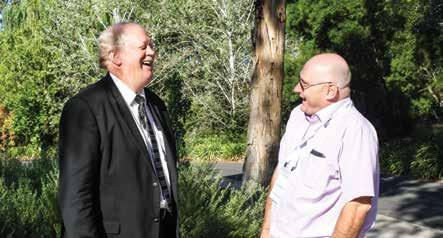
metropolitan-wide approach to waste and resource recovery coordination.
In 2015, Rob spearheaded a more powerful MWRRIP, consulting widely with industry to cover market assessment, infrastructure research and data analysis.
Released in 2016, the plan was widely supported by government, industry, local government and the community.
“At the time it was considered a highly ambitious document as there was a plan to not schedule any new landfills and find alternatives, especially in the southeast of Melbourne,” Rob says.
“Just over three years into the plan we are going to market this year with 16 of the southeast councils for landfill alternatives and we have a robust organics network in place.”
Likewise building Melbourne’s organics recycling network through collaborative procurement models formed a key part of the MWRRIP.
Over the past decade, the organics network has been responsible for processing Melbourne’s green and, subsequently, food waste. Rob oversaw the group’s facilitation of collaborative organics processing contracts, including the first one in Melbourne’s west and eventually north.
“The organics network has the capability for councils to transition to FOGO, with around eight councils either trialling or running a service and up to 17 making the switch.”
By 2018 the east followed with further contracts expected to be operational by 2019-20. Most recently, the southeast network was developed with Sacyr Environment contracted to deliver a $65 million site in Dandenong South.
Within this, Rob helped develop MWRRG’s awareness and education campaign Back to Earth, which helped councils lower their contamination, with Nillumbik reducing its contamination from 10.5 to a mere 0.79 per cent.
As a result of collective efforts by councils, contractors and MWRRG, the capacity of the organics processing network currently exceeds the Metropolitan Implementation Plan 2021 target by 120,000 tonnes.
Rob adds that the MWRRIP also acknowledged that planning and resource recovery need to be integrated, with MWRRG conducting extensive work on buffer protection in conjunction with Sustainability Victoria and planning authorities.
Initiatives included the inclusion of buffers for protecting key waste and resource recovery infrastructure, educating statutory planners on
MWRRG provided funding grants for best practise waste management to the Melton Resale Centre.

understanding the importance of such sites and the waste sector on how the planning system works. Significantly, a Memorandum of Understanding was signed between key state agencies to implement a whole-ofstate government approach to buffer protection.
“Getting that social license to operate has been a key driver to ensuring we have a sustainable integrated network aligned with the needs of the community.”
As far as the future goes, MWRRG will be driving further success in developing a commercial and industrial waste strategy to reduce food and plastic waste, expanding its Back to Earth initiative and progressing new collaborative procurements for council recycling services stimulating high-quality infrastructure.
For now, Rob will be spending some quality time with his family and looks forward to providing his support to the resource recovery sector on select projects into the future.

Fast Fact
Rob Millard oversaw the group’s facilitation of collaborative organics processing contracts. The North and Western Organics Processing Contract was the first collaborative contract undertaken by MWRRG, with six western councils originally and then the addition of five northern councils. The contract has the capacity to process 120,000 tonnes of green and food waste each year. The South East Organics Processing Contract with eight metropolitan councils has capacity to process 280,000 tonnes of green and food waste each year. The Eastern Organics Processing Contract covers five councils in Melbourne’s east.
These collaborative contracts have led to substantial investment from the private sector, including Veolia’s processing facility at Bulla which was the largest of its kind in Victoria when it was built. More recently, Sacyr Environment Australia’s $65 million state of the art facility in Dandenong South will help meet demand in the southeast of Melbourne.
The success achieved through collaborative organics procurement has inspired other waste and resource recovery groups in states and territories to use or adapt this model.

The state of waste
WASTE MANAGEMENT REVIEW TALKS TO DR. GILLIAN SPARKES, VICTORIA’S COMMISSIONER FOR ENVIRONMENTAL SUSTAINABILITY, ABOUT THE 2018 STATE OF THE ENVIRONMENT REPORT.
Victoria’s Commissioner for Environmental Sustainability Act 2003 includes a statutory requirement that the Commissioner prepare and submit a periodical report measuring environmental indicators across the state, at intervals not exceeding five years.
According to Dr. Gillian Sparkes, Victoria’s Commissioner for Environmental Sustainability, the report functions as an environmental score card with recommendations for improvement. She adds that the report’s legislative authority means government must formally respond to recommendations.
The State of the Environment 2018 Report (SoE) was released in March of this year and Waste Management Review spoke to Gillian in September.
Gillian has served as Victoria’s Commissioner for Environmental Sustainability since 2014, leading reforms in environmental monitoring, assessment and reporting.
“Science has played a pivotal role in my life. It is the foundation on which I built my career and pursued my passions; helping others, solving problems, delivering change in complex environments and resolving difficult issues,” Gillian says.
According to Gillian, the SoE provides community with access to previously unavailable baseline science. It is also the first time the United Nations Sustainable Development Goals (SDGs) have
Dr. Gillian Sparkes, Commissioner for Environmental Sustainability.
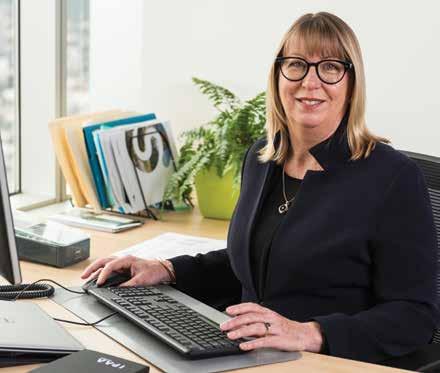
been comprehensively applied to state level environmental reporting in Australia.
The SDGs function as a roadmap towards sustainable development by offering a consensus framework against which progress is measured.
Gillian says the framework allows her team to measure improvement and decline across a broader socioeconomic suite of indicators than traditional biophysical SoE reports. She adds that this information can be used to compare Victoria’s performance with other jurisdictions.
“This allows us to understand the entire system and see the balance between environmental, social and economic considerations,” she says.
“My team and I are now preparing the framework for the SoE 2023. It will build on the scientific baseline and SDG alignment presented in the SoE 2018. The framework for the SoE 2023 report will be tabled in the Victorian parliament in 2020.”
According to Gillian, the SoE 2018 also introduces the UN System of Environmental Economic Accounting (SEEA) into state-level environmental reporting for the first time, with a focus on the contribution and benefit of ecosystem services to Victoria’s $400 billion economy.
“SEEA will allow us to have broader conversations with
government, business and industry,” Gillian says.
“A national waste account is a priority for the national set of Environmental-Economic accounts and is under development by the Meeting of Environment Ministers.” DATA GAPS The SoE highlights the significance of waste and resource recovery in the integrated environmental system, noting it has the power to deplete natural resources, create pollution, increase greenhouse gas emissions and affect human health.
As such, resource recovery must be a key element of any systematic response to environmental challenges and emerging global megatrends such as climate change, disruptive technologies and natural resource constraints.
Gillian says while waste and resource recovery data is more substantive than in some sectors, public reporting that matches her office’s aspirations for monitoring and understanding the circularity of Victoria’s economy, or the health of the waste and resource recovery system as a whole, is limited.
“The SoE identifies a need to develop indicators that track the overall health of the resource recovery system including markets, not just to rely on current metrics such as tonnes of waste generated, tonnes sent to landfill, or tonnes recycled,” she says.
“We have good data on total waste generation and municipal waste per capita, but the data on litter and illegal dumping is poor and on hazardous waste is only fair.”
Additionally, Victoria has not AU 250 O3M, O2M, E2M 19 200x135 e.pdf 1 02.09.19 08:53
yet agreed on indicators to track the circular economy transition, according to the report.
“We need to strive for more real-time data for regulators and managers, and the participation of citizen scientists in the data acquisition processes of government,” Gillian says.
“A circular economy will challenge our assumptions and we must ensure that we have the right data. It’s about knowing what we need to know, when we need to know it.”
TRANSITION Earlier this year, the Victorian Government opened its draft Victorian Circular Economy Policy for public comment.
According to the official document, the policy aims to redefine growth by decoupling economic activity from

Smart 3D camera for mobile machines
W A R R A N T Y
Collision avoidance for commercial and industrial vehicles
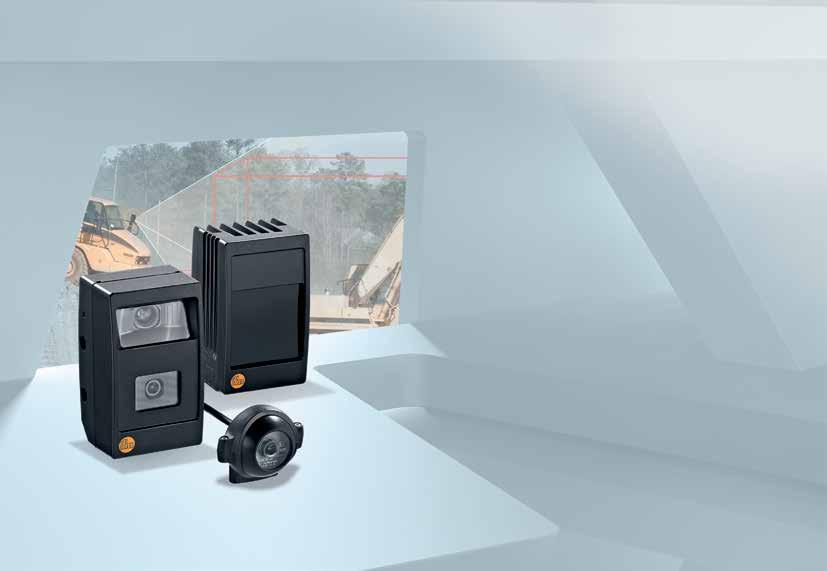
A mobile camera safety system that recognises dangerous situations. Should a pedestrian or an object such as machinery or another vehicle be in view of the camera, the controller can give the driver a warning or gently brake the vehicle to avoid a collision or dangerous situation.
Mining, Transport, Earthmoving, Agriculture, Construction, Warehousing, Municipal waste & sweepers, Ground support equipment (GSE), Fork lifts
The SoE functions as an environmental scorecard.
the consumption of finite resources and design waste out of the system.
The document also highlights durable product design to incentivise reuse and repair and share economy business models. An action plan and official policy document are set for release in 2020.
“This shift reflects the pathway Victoria has already identified to improve outcomes from this sector, and the metrics and recommendations of the 2018 SoE support this decision,” Gillian says.
“Circular economy indicators will be developed in line with the policy to enable expanded reporting beyond the linear system, monitor the operation and circularity of Victoria’s waste and resource recovery system and track progress of the transition. Good data enables good decision making.”
The SoE recommends a transition pathway through community and business engagement with whole-ofgovernment buy-in.
“A circular economy cannot focus only on waste and recycling if it is
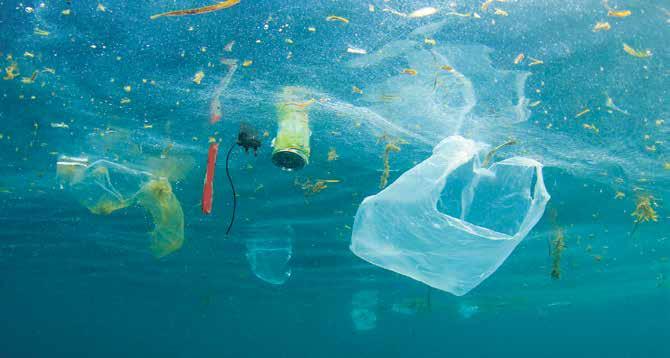
Dr. Gillian Sparkes, Commissioner for Environmental Sustainability
to drive change in the way people consume resources,” the report states.
“It needs to encompass all aspects of the resources cycle, including resource extraction, imports, consumer behaviour, markets development and enabling procurement policies across the private and public sectors.”
Gillian advises that the state government align its instructional planning and procurement processes, to support the delivery of the proposed policy.
“The size of the task ahead can’t be underestimated, and will require continued and diverse investment in the sector including research and development, technology, infrastructure, plant and equipment, consumer education, new markets for recycled products and the development and enforcement of appropriate regulatory regimes,” she explains.
Gillian says continuing to advocate for a national approach to waste and resource recovery is fundamental to the transition.
RECOMMENDATIONS The SoE also recommends that Sustainability Victoria (SV) develop indicators for the Statewide Waste and Resource Recovery Infrastructure Plan and Regional Waste and Resource Recovery Implementation Plan.
“From July 2020, I have recommended that SV expand its monitoring and reporting framework to track the progress of strategy implementation and publicly report, at least annually, on Victoria’s transition to a circular economy – plus investment in long-term, state-wide community education to improve outcomes for this sector,” Gillian says.
“The government will formally respond to these recommendations by March 2020, and SV will be represented in that response.”
Additionally, the SoE recommends the Victorian Government, commencing in the metropolitan region as a minimum, align institutional planning and procurement processes, including leveraging Victorian Government Procurement.
Gillian says the model could be extended to environmental outcomes, such as specifying a recycled material content requirement for government projects.
“This alignment would be adopted state-wide and enable an orderly transition to a circular economy by

2030,” she says.
The SoE also notes that when developing the policy action plan, the roles of all agencies should be clarified, with responsibilities for delivery, procurement, reporting and regulatory roles nominated.
Gillian adds that government procurement could be used as an activator for circular outcomes.
“For example, the former Victorian Industry Participation Policy, now known as the Local Jobs First Policy, requires companies to use a specified amount of local content to participate in Victorian government tenders,” Gillian says.
“To achieve our ambition to move away from 20th century take, make, waste business models, innovation and leadership from the private sector is key.”
